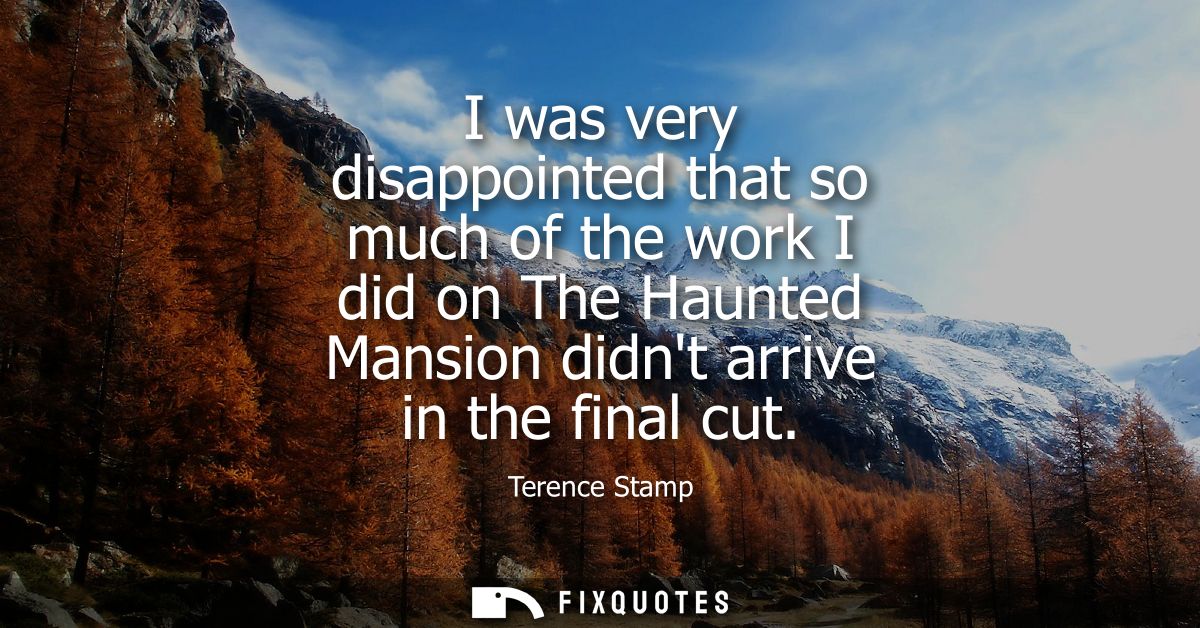"I was very disappointed that so much of the work I did on The Haunted Mansion didn't arrive in the final cut"
About this Quote
Terence Stamp’s reflection on his experience with The Haunted Mansion alludes to a deep sense of professional disappointment, a sentiment familiar to many artists whose creative efforts are subject to the demands and compromises of large studio productions. By stating that much of his work "didn't arrive in the final cut", Stamp points to the reality that a significant portion of his performance, possibly including scenes he found meaningful or transformative, was omitted during the editing process. This can be a dispiriting outcome for any actor, especially one devoted to his craft, as it means the public will never fully see the nuances or intentions he infused into the role.
This remark also highlights the collaborative, and sometimes frustratingly impersonal, nature of filmmaking. While actors may pour themselves into their characters during production, the final product is shaped by a multitude of creative and logistical decisions, often governed by the perspectives of directors, editors, and producers. Scenes are cut or altered for reasons such as pacing, narrative clarity, or adherence to a particular audience demographic, factors often outside the actor’s control. As a result, an actor’s vision for their character and the overall story may conflict with the priorities guiding post-production.
Stamp’s disappointment reveals both his professionalism and his investment in the project. It’s not merely about screen time; it’s about the integrity of his artistry and the missed opportunity to showcase his full contribution. The sense of loss embedded in his words is not just personal but explanatory of the sacrifices and unpredictabilities inherent in film acting. For audiences, Stamp’s experience serves as a reminder that the movie they see is only a fraction of the creative labor behind it, shaped by unseen edits and discarded hours of performance, leaving even seasoned actors vulnerable to the sharp blade of the cutting room.
More details
About the Author

